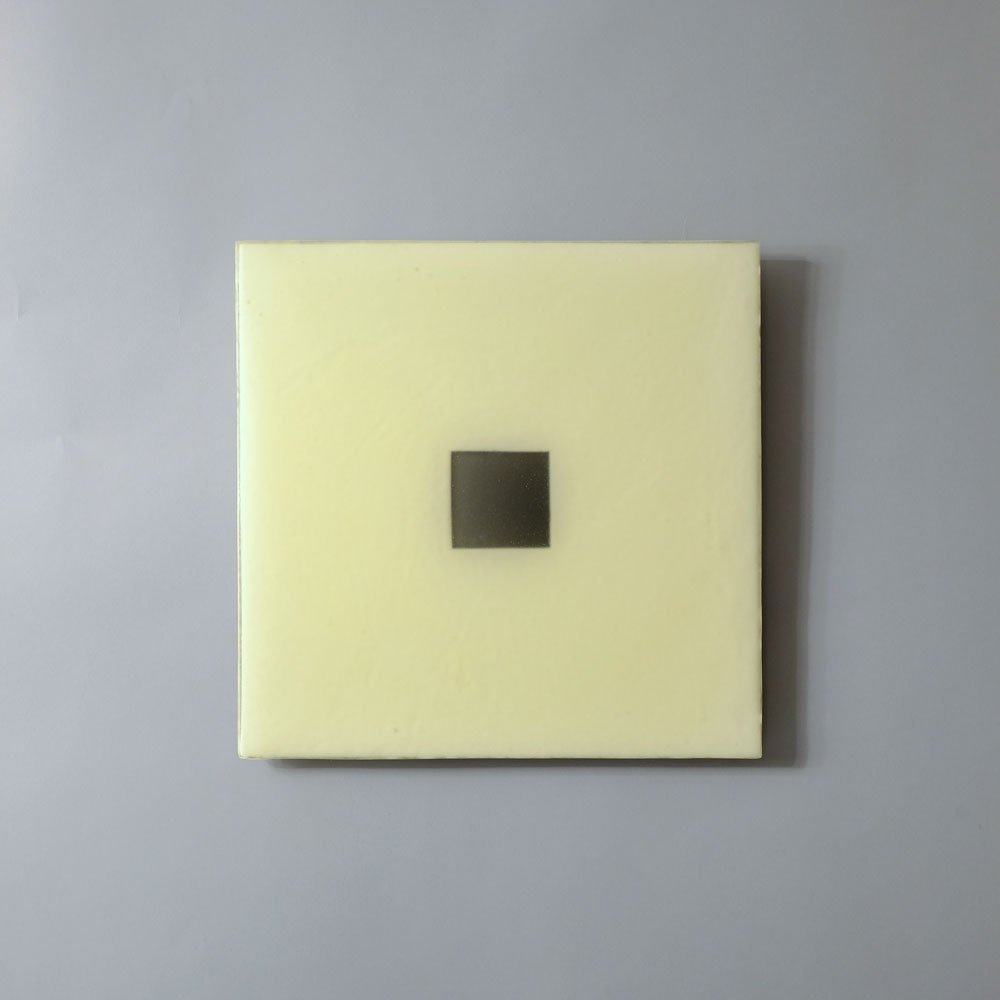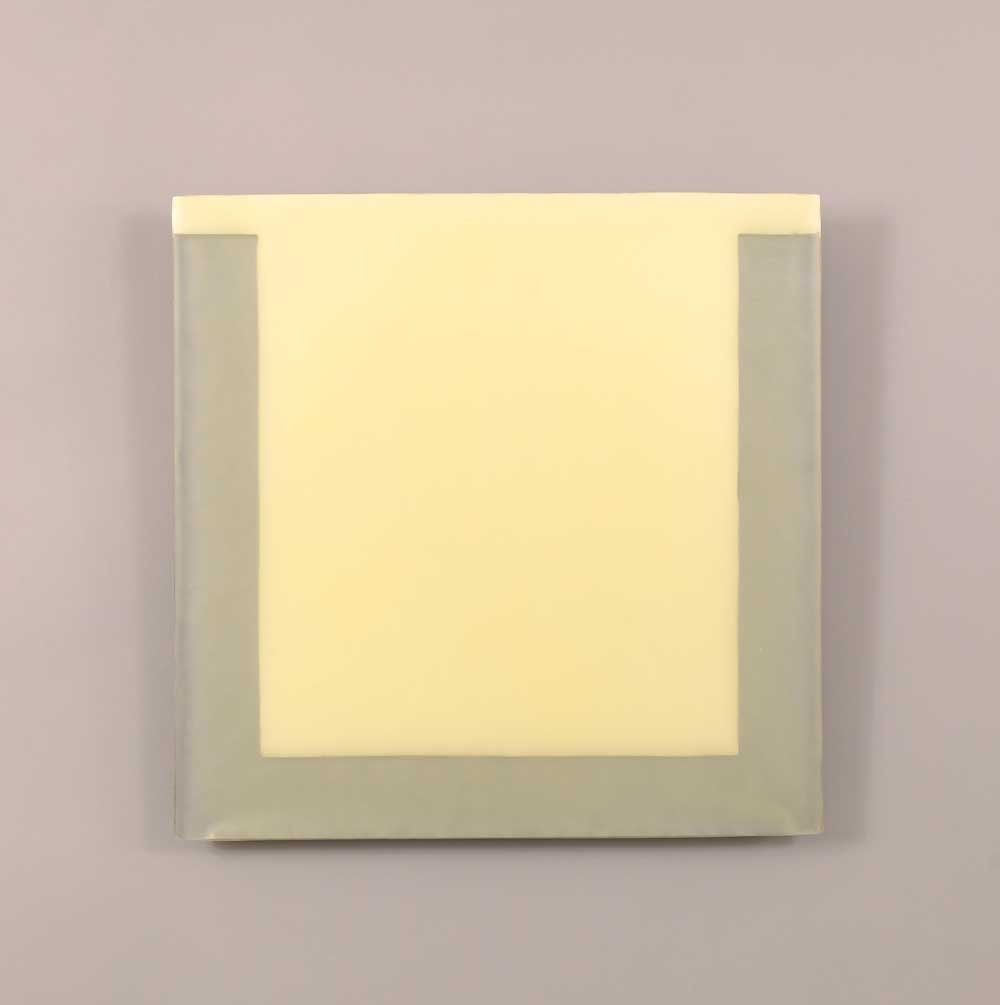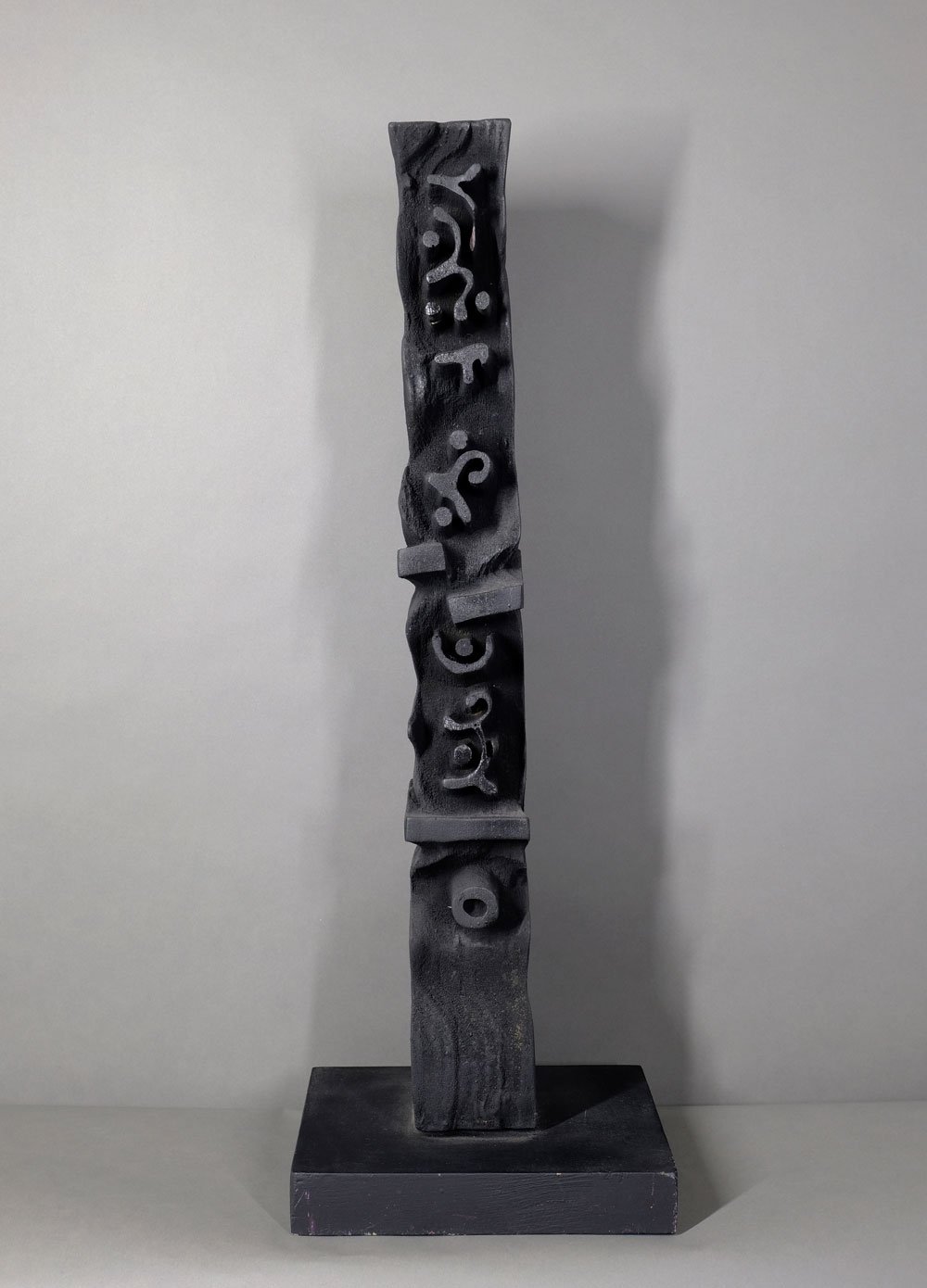Image Source: SANTA FE NEW MEXICAN (courtesy photo)FLORENCE MILLER PIERCE
1918-2007
Florence Miller Pierce was known for thought provoking abstract, non-objective, monochromatic painting rooted in her dedication to Zen Buddhism and meditation.
Many of her works give the appearance of floating off the wall, something she achieved with richly colored and textured geometric shapes—polygons, triangles, and rectangles—encased in divided layers of transparent resin over colors that had been softened through mixing with milled fiberglass.
FLORENCE MILLER PIERCE BIOGRAPHY
-
Working with resin to create textures occurred for Florence Miller Pierce in 1969 when she 51 years old and was in her New Mexico studio making foam sculpture. A chance spill of resin landed on a piece of aluminum foil, and when it hardened, it ‘shimmered’, and she was fascinated. Learning that she could create an interesting effect with resin adhering to mirrored tiles, “she would continue with the new body of work for nearly 35 years.” (Regan)
In 2005, the Tucson Museum of Art held a solo exhibition of work by Florence Miller Pierce, then age 87, and featured were 33 pieces of resin-on-mirror paintings described as “jeweled bits of minimalism, delicately colored and sensuously textured. Sometimes, the thick layers of resin are as pearly and smooth as flesh. Elsewhere, where Pierce has manipulated the resin while it’s drying; the layers are dimpled, folded like cloth, or even crumpled like paper. And their forms echo the sculptures that Pierce abandoned when she had her eureka moment. Shaped into squares, arches and triangles, they veer into 3-D, hanging out slightly from the walls and casting shadows in the light.” (Regan)
She was born with the name Florence Miller in Washington DC, and by age 18, had a serious dedication to art and spiritualism. Her parents ran a private boarding school. From childhood, she was interested in art, and nurtured by an art teacher, May Ashton, she visited museums. Miller studied in DC at the Phillips Gallery and the Corcoran School of Art.
Having become aware that Taos, New Mexico was an art center from visiting her grandparents, who lived there, she persuaded her parents to allow her to go alone to Taos in 1936 for a summer to study at the Studio School with Emil Bisttram, who not only was a highly accredited teacher but who also had a dedication to meditation and spiritualism. She returned to Taos in the winter of 1937, and the next year, she returned, at Bisttram’s invitation, to take part in the forming of the Transcendental Painting Group (TPG). These founders were nine artists dedicated to abstract art expression, grounded in creative art imagination and the transporting of painting beyond objective recognition. In 1938, they banded together to share ideas and organized mutual exhibition venues that made the public aware of non-objective and abstract art. She was the youngest member and outlived all the other members of the organization, which held together for several years until World War II sidetracked their ability to remain a cohesive entity.
Four decades later, it was written that her austere, abstract works of art reflecting color, beauty and natural forms, were indeed a synthesis of the teachings of Emil Bisttram who inspired his students with the words “Idea, Shape, Color and Form.” Of her work, Pierce reflected that she had been “trying to do the purest work I know how. What comes to mind is the Zen word that means original mind, about emptying mind and space.” (Regan)
Through Bisttram, Florence Miller met Horace Towner Pierce, an art student and one of the founders of TPG, and they married in 1938. He was described as looking like the pipe-smoking movie star, Fred MacMurray. The couple lived in New York and California, where in 1939, she and her husband, along with other members of the Transcendental Painting Group, exhibited at the Golden Gate International Exposition. By 1950, they had settled in Albuquerque. They had two children, one whom died several months after birth.
Horace Pierce, age 41, died suddenly in 1958, when Florence was 39. She remained in Albuquerque, continuing her commitment to geometric abstract and non-objective painting and relief sculpture of layered dried pigmented resin. Some viewers regard her artwork as “distillations of the New Mexico landscape” with their “stark geometry and earthy color palette” (Regan) that suggests adobe.
However, she was not an artist who did a lot of interacting with other artists as she worked pretty much in isolation and viewed herself as a ‘silent artist’. She became a strong admirer of Agnes Martin, the reclusive painter from Taos who was her peer and whose minimalist paintings brought record-breaking prices in New York auction houses. In 2004, Pierce, Martin and the potter, Maria Martinez, were honored in a group show, In Pursuit of Perfection, in Santa Fe at the Museum of Fine Arts.
Florence Pierce died at age 90 at her home in Albuquerque on October 25, 2007
Written by Lonnie Pierson Dunbier. Sources: Margaret Regan, “Reflective, Like Jewels”, Tucson Weekly, October 13, 2005, http://www.tucsonweekly.com/gbase/Arts/Content?oid=74136, Jennifer Riley, “Florence Pierce”, The Brooklyn Rail, May 2006, http://www.brooklynrail.org/2006/05/artseen/florence-pierce, Obituary, Art in America, December 2007, Albuquerque Tribune Online: Interview with the artist, http://web.abqtrib.com/archives/diversions01/071301_diversions_pierce.shtml, Peter Hastings Falk (editor), Who Was Who in American Art























1970
Sumi ink on rice paper
32 1/2 x 22 inches
Signed and dated lower left
INQUIRE